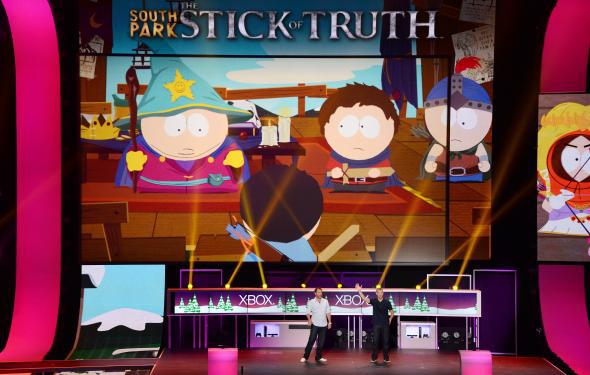“Screw you guys. I’m going home!”
Squat little Cartman’s catchphrase, uttered in many an episode of Comedy Central’s long-running series South Park, provides ample evidence that regional variations on the second person plural are alive and well in English. Tami Taylor’s inveterate y’all-ing, over five seasons of Friday Night Lights, offers the same, albeit more down-home, assurance. The most prescriptive accounts of Standard English, of course, advise only the use of you and you across the board, whether you’re addressing one person or one hundred, but distinctions clearly exist and, whether we realize it or not, we draw them every day.
In fact, the English language, like most languages, has always found a way to distinguish between the singular and plural forms of its second person pronoun. Once upon a time, the difference was fairly simple. In earlier incarnations of English, spoken by Anglo-Saxons as far back as the fifth century, þū (like thou) addressed one person, and ġē (like ye or you) indicated more than one. That was it. The second person became somewhat more complicated after the Norman Conquest, however, when a soupçon of French dialect insinuated itself into the language, and by the 13th century it had become de rigueur to differentiate between not only singular and plural but also polite and familiar address. For this purpose, the second personal plural was pressed into additional service as a singular pronoun of polite address. In other words, ye was used when speaking to an individual nobleman or a gathering of peasants. Thou was reserved for an intimate or an inferior and was always singular.
This so-called “power semantic,” however, never firmly took hold, at least in English, and the language eventually rid itself completely of a class-based pronoun hierarchy. By the mid-16th century, you started replacing all other second person pronouns and becoming an all-purpose means of address—number and social standing be damned. Still, the categories would remain in flux for a time. Take, for instance, Shakespeare’s Twelfth Night, from the very beginning of the 17th century. Thou and you are both still in play—and different enough that for a nobleman like Sir Andrew Aguecheek to thou a stranger of equal rank is an unmistakable insult. Yet in the same play—in the same castle, no less—the noblewoman Olivia more than occasionally addresses a servant-class clown as you. Interestingly, when these social distinctions finally crumbled, so too did those between the singular and plural. In Daniel Defoe’s Robinson Crusoe, written in 1719, you outpaces thou by a ratio of nearly 8 to 1. By 1810, there is nary a thou in Jane Austen’s Sense and Sensibility, and soon you is the lone second person pronoun standing.
Before you grieve for the second person plural, consider this: just as thou (and thus any distinction between a single you and a group you) was on its way out of English grammar books, new distinctions began to creep into the language. You can practically track the decline of one against the rise of the other. By 1903, A School Grammar of the English Language had at last relegated thou to the museum display case and promoted you as both the singular and plural second person pronoun. Yet new forms of the second person plural, like y’all, you-all, yous(e), yez, and you-uns, had been popping up in the language for a good century or more. It appears that when speaking we feel the absence of a distinctly plural form of you and reach for it like a gesture or a confirmation.
It’s too easy to dismiss such plural forms of the second person pronoun as regionalisms of, say, the Southern U.S., Appalachia, or pockets of the Northeast. We smile at the authentic colloquialism of Whitey Bulger, the organized crime figure who was captured in 2011, who told jurors to “Do what youse want with me” in his murder and racketeering trial. And while it’s true that yous(e) gets the most use in places like South Boston and South Philly, and y’all is mostly limited to the South, most of us have a tendency to distinguish our plural you in the same way that Cartman does—with a you guys. Presidents say it. News anchors say it. Even educational children’s television programming says it. You guys is currently the most popular unauthorized second person plural in the U.S., though there are many variations on the theme.
“I have you two,” Caractacus Potts croons to his two little charges in this charming ditty from Chitty Chitty Bang Bang. “I’m really proud of all of you,” President Obama told an assembly of his campaign staffers after the 2012 election votes had been counted. “It’s good to have you both with us,” PBS news anchor Judy Woodruff tells her guests on a regular basis. There is something more intimate, more demonstrative, more direct, about making sure that pronoun is unambiguously plural.
So does this mean that, given enough years, some alternative plural form of the second person will have the sanction of the Chicago Manual of Style and language teachers alike? Some linguists have theorized that the southern y’all will continue to gain in popularity, suggesting that its single lexeme makes it more palatable than you guys, the other front-runner.
But the question of “formal recognition” may be irrelevant. Speech is where we most often call upon these plural forms of you, and the way we talk has always been distinct from the way we write. No matter what the grammar books and style guides prescribe, we’ll keep finding ways to distinguish the many from the one. All y’all can count on it.
